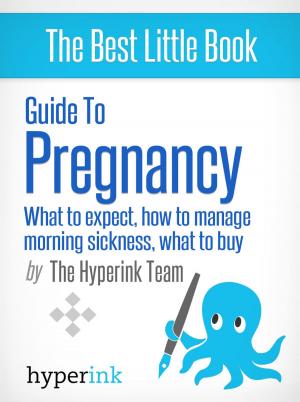Modern Lifestyles: The Newest Fertility Treatments: How Modern Women Can Buy Time
Nonfiction, Reference & Language, Reference, Guides & Handbooks| Author: | Laura Malfere | ISBN: | 9781614649281 |
| Publisher: | Hyperink | Publication: | February 24, 2012 |
| Imprint: | Hyperink | Language: | English |
| Author: | Laura Malfere |
| ISBN: | 9781614649281 |
| Publisher: | Hyperink |
| Publication: | February 24, 2012 |
| Imprint: | Hyperink |
| Language: | English |
ABOUT THE BOOK
Infertility prevents couples who have unprotected sex on a regular basis from achieving pregnancy. Infertility can be both primary and secondary; primary infertility is when the couple cannot get pregnant and never have done so before, and secondary is when a couple is having difficulty conceiving after at least one previously successful pregnancy.
Fertility issues can occur in both men and women, with each sex having their own unique and treatable conditions that can prevent pregnancy. The majority of couples can resolve such issues by addressing modifiable risk factors, taking fertility medications, surgery, or assisted reproduction therapies. As age is a factor that increases many medical causes of infertility, it is important that women who want to get pregnant consider all of the options that are available to them in order to increase their chances.
Women who find themselves to be infertile usually suffer from ovulation disorders, but some cases can be due to other conditions that affect the reproductive system, as well as lifestyle factors and age. Those who suffer from ovulation disorders will find that their monthly menstrual cycle does not always result in an egg being released, which prevents them from becoming pregnant. Such conditions can arise as a part of the natural ageing process, from primary conditions such as polycistic ovarian syndrome, or as a secondary factor due to conditions such as AIDS or poor thyroid function.
EXCERPT FROM THE BOOK
Clomidane Citrate
The most common infertility medication used in women who find that they are suffering from ovulation disorders is Clomidane citrate. The commercial name most commonly used for this infertility drug is Clomid, a drug that you will often find being discussed on pregnancy and infertility forums. As a drug that is taken orally, Clomid is designed to regulate ovulation, but can occasionally lead to more than one egg being released, resulting in multiple pregnancies.
The majority of women will find that their doctor starts them on a relatively low dose of Clomid, before having their Mg increased if they have been unsuccessful for a few cycles. Clomid is highly successful, around 80-85% of women who experience infertility due to ovulation disorders find that they get pregnant after using it.
For those who are prescribed it there is a need to be aware of some of the common side effects associated; many women experience hot flushes, nausea and headaches. Some find that they experience pain when ovulating and there is a slight increase in risk for miscarriages and multiple births...
Buy a copy to keep reading!
ABOUT THE BOOK
Infertility prevents couples who have unprotected sex on a regular basis from achieving pregnancy. Infertility can be both primary and secondary; primary infertility is when the couple cannot get pregnant and never have done so before, and secondary is when a couple is having difficulty conceiving after at least one previously successful pregnancy.
Fertility issues can occur in both men and women, with each sex having their own unique and treatable conditions that can prevent pregnancy. The majority of couples can resolve such issues by addressing modifiable risk factors, taking fertility medications, surgery, or assisted reproduction therapies. As age is a factor that increases many medical causes of infertility, it is important that women who want to get pregnant consider all of the options that are available to them in order to increase their chances.
Women who find themselves to be infertile usually suffer from ovulation disorders, but some cases can be due to other conditions that affect the reproductive system, as well as lifestyle factors and age. Those who suffer from ovulation disorders will find that their monthly menstrual cycle does not always result in an egg being released, which prevents them from becoming pregnant. Such conditions can arise as a part of the natural ageing process, from primary conditions such as polycistic ovarian syndrome, or as a secondary factor due to conditions such as AIDS or poor thyroid function.
EXCERPT FROM THE BOOK
Clomidane Citrate
The most common infertility medication used in women who find that they are suffering from ovulation disorders is Clomidane citrate. The commercial name most commonly used for this infertility drug is Clomid, a drug that you will often find being discussed on pregnancy and infertility forums. As a drug that is taken orally, Clomid is designed to regulate ovulation, but can occasionally lead to more than one egg being released, resulting in multiple pregnancies.
The majority of women will find that their doctor starts them on a relatively low dose of Clomid, before having their Mg increased if they have been unsuccessful for a few cycles. Clomid is highly successful, around 80-85% of women who experience infertility due to ovulation disorders find that they get pregnant after using it.
For those who are prescribed it there is a need to be aware of some of the common side effects associated; many women experience hot flushes, nausea and headaches. Some find that they experience pain when ovulating and there is a slight increase in risk for miscarriages and multiple births...
Buy a copy to keep reading!















